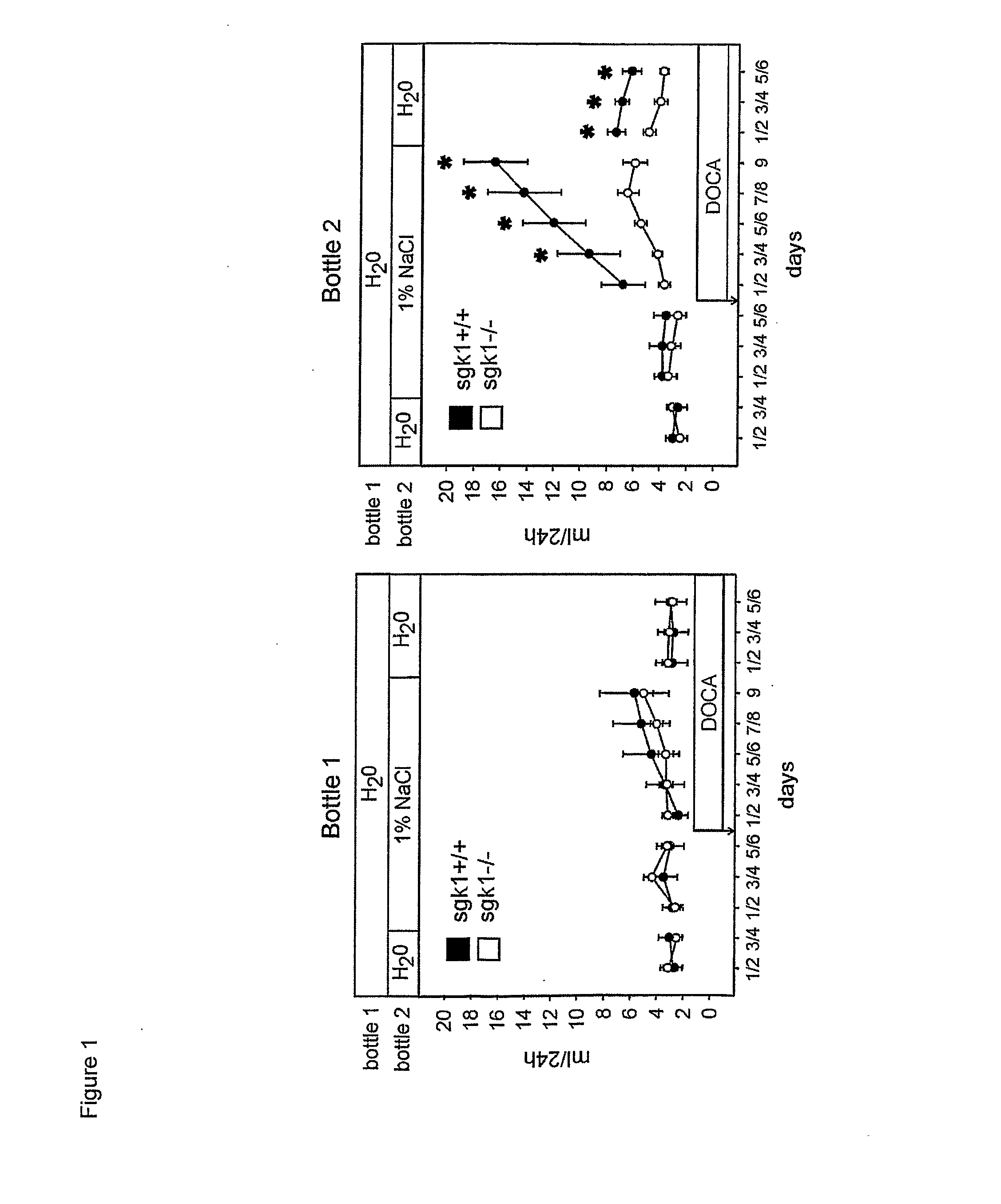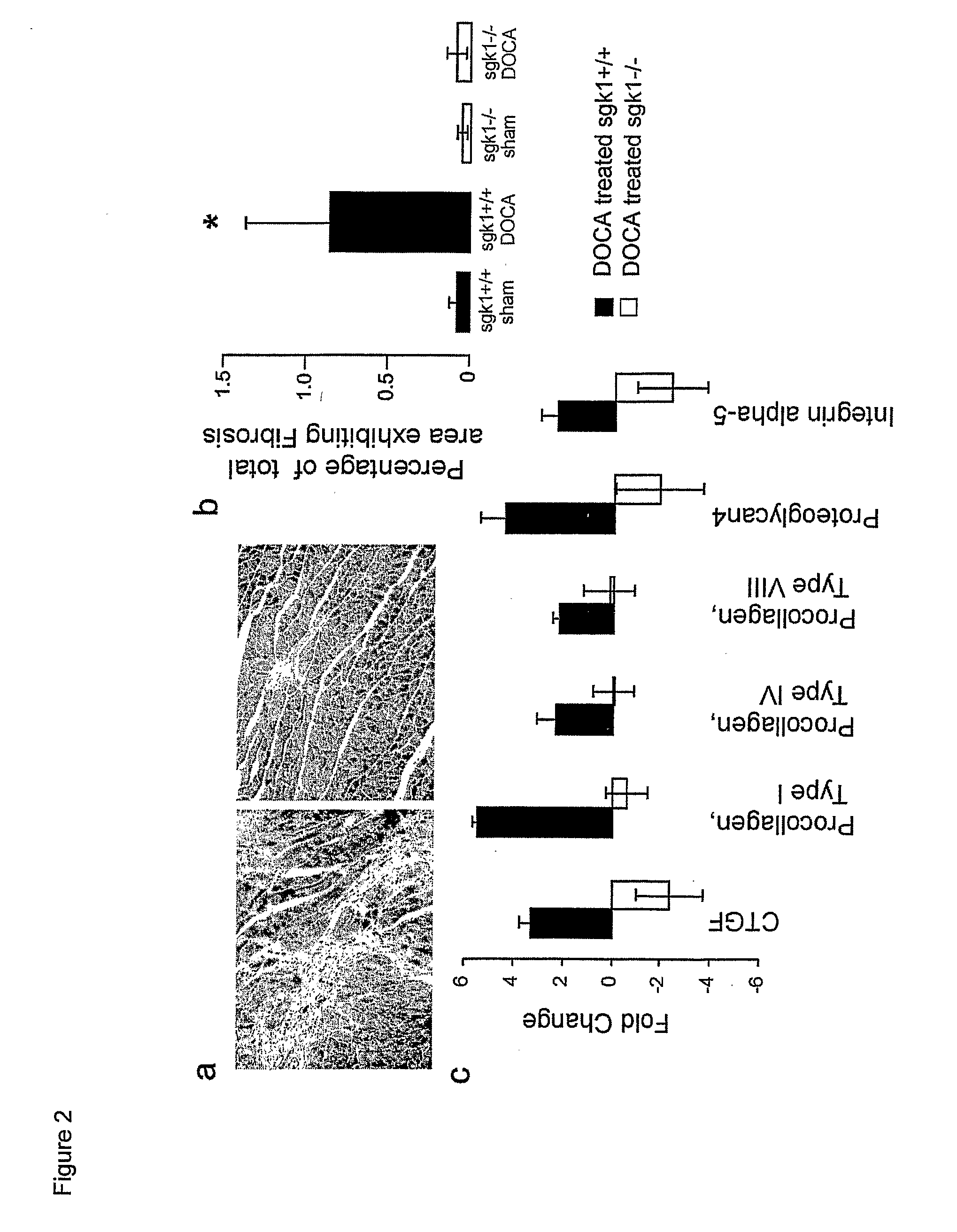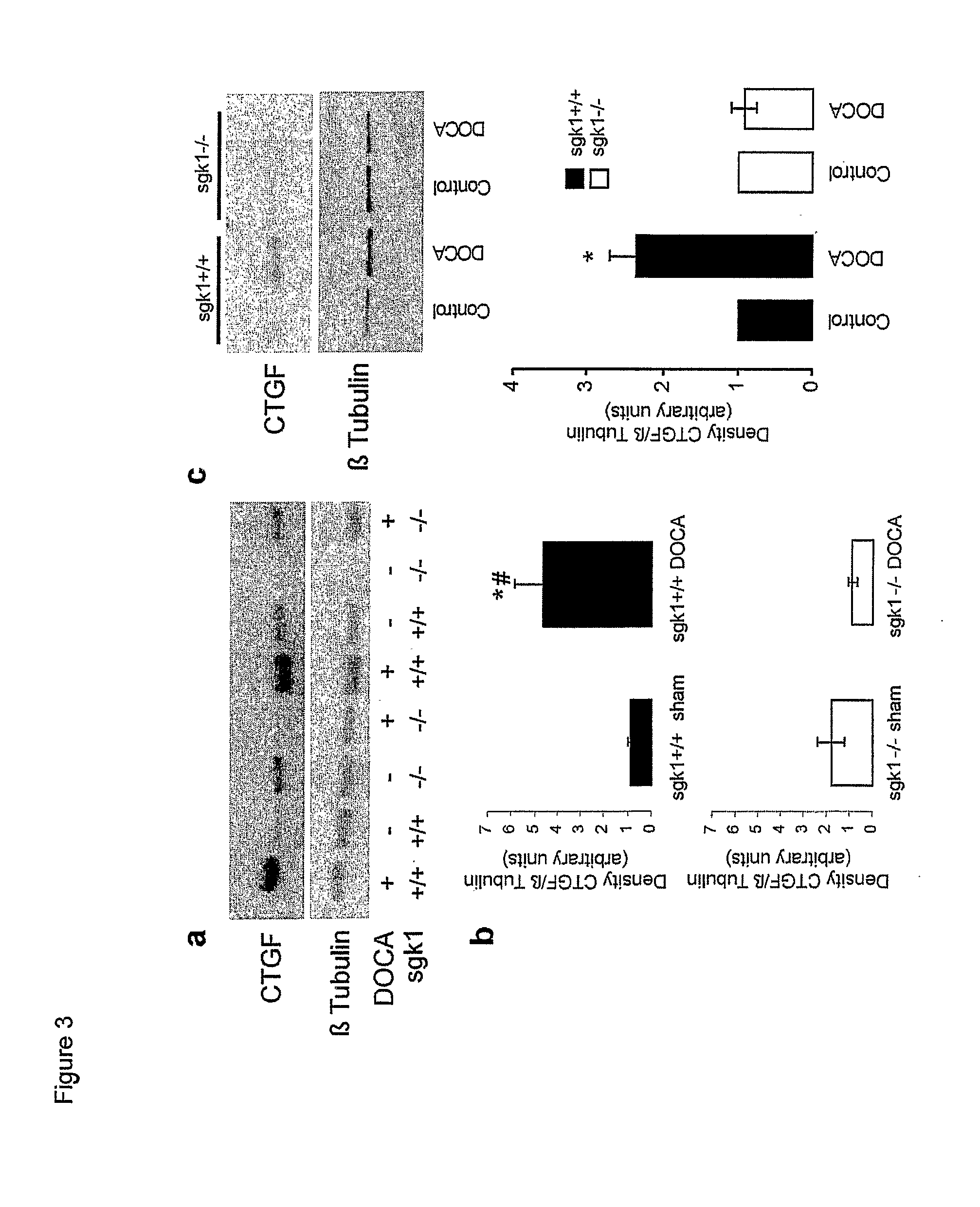Methods For Interfering With Fibrosis
- Summary
- Abstract
- Description
- Claims
- Application Information
AI Technical Summary
Benefits of technology
Problems solved by technology
Method used
Image
Examples
example 1
Animal Experimentation
[0035] Mice deficient in SGK1 (sgk1− / −) were generated as previously described 9. Wild type (sgk1+ / +) and SGK1 knockout (sgk1− / −) mice were implanted with a 21 day release 50 mg DOCA pellet (Innovative Research of America, Sarasota, Fla.) in the neck area (28) during anesthesia (intraperitoneal medetomidin 0.5 mg / kg+midazolam 5 mg / kg+fentanyl 0.05 mg / kg which was reversed by subcutaneous atipamezol 2.5 mg / kg+flumazenil 0.5 mg / kg+naloxon 1.2 mg / kg). One day before implantation of DOCA pellets, sgk1− / − and sgk1+ / + mice were weighed and placed individually in metabolic cages (Tecniplast Hohenpeissenberg, Germany) for basal 24 hour urine collection. Mice had free access to a standard mouse diet (Altromin, Heidenau, Germany) and tap water and / or 1% or 2% NaCl. The inner wall of the metabolic cages was siliconized and urine was collected under water-saturated oil. Systolic arterial blood pressure was determined by the tail-cuff method before and on days 1, 2, 4, 6, ...
example 2
[0036] Hearts from untreated or DOCA / high salt treated (18 days) sgk1+ / + and sgk1− / − mice were quickly removed under anesthesia, the weight determined and fixed in 4% paraformaldehyde / 0.1 M sodium phosphate buffer (pH 7.2) overnight and embedded in paraffin. Dewaxed 5 μm thick heart muscle sections were stained with H&E and Masson's trichrome (30). Stained paraffin sections were analysed on a Zeiss Axioplan microscope (Zeiss, Jena, Germany). Areas were measured on digitized images using an Axiocam video camera (Zeiss, Jena, Germany) using the manufacture's software (Axiovision, Zeiss, Jena, Germany). Total tissue areas were measured with a 4× objective; fibrotic areas were identified and quantified using a 20× objective. The degree of fibrosis was then calculated as a percentage of total tissue area.
example 3
Microarray Analysis
[0037] Total RNA was isolated from hearts obtained from untreated or DOCA / high salt (48 h) treated sgk1+ / + and sgk1− / − mice using the Qiagen RNeasy Fibrous Tissue Midi Kit according to the manufacture's instructions (Qiagen, Hilden, Germany). Using total RNA from hearts of DOCA / high salt or sham-treated sgk1− / − and sgk1+ / + mice, second-strand syntheses were generated using a commercially available kit (Invitrogen Life Technologies, Rockville, Md.) and an oligo d(T)24 T7 primer. cRNA was generated using biotin-labelled CTP and UTP by in vitro transcription using a T7 promoter-coupled double stranded cDNA as template and the T7 RNA transcript labelling kit (ENZO Diagnostics, Farmingdale, N.Y.). The cRNA was fragmented and hybridised to the mouse genome MOE430A oligonucleotide array chip (Affymetrix, Santa Clara, Calif.). The array chips were then stained using phycoerythrin conjugated streptavidin (Molecular Probes, Invitrogen Life Technologies, Rockville, Md.) and...
PUM
 Login to View More
Login to View More Abstract
Description
Claims
Application Information
 Login to View More
Login to View More - R&D
- Intellectual Property
- Life Sciences
- Materials
- Tech Scout
- Unparalleled Data Quality
- Higher Quality Content
- 60% Fewer Hallucinations
Browse by: Latest US Patents, China's latest patents, Technical Efficacy Thesaurus, Application Domain, Technology Topic, Popular Technical Reports.
© 2025 PatSnap. All rights reserved.Legal|Privacy policy|Modern Slavery Act Transparency Statement|Sitemap|About US| Contact US: help@patsnap.com



